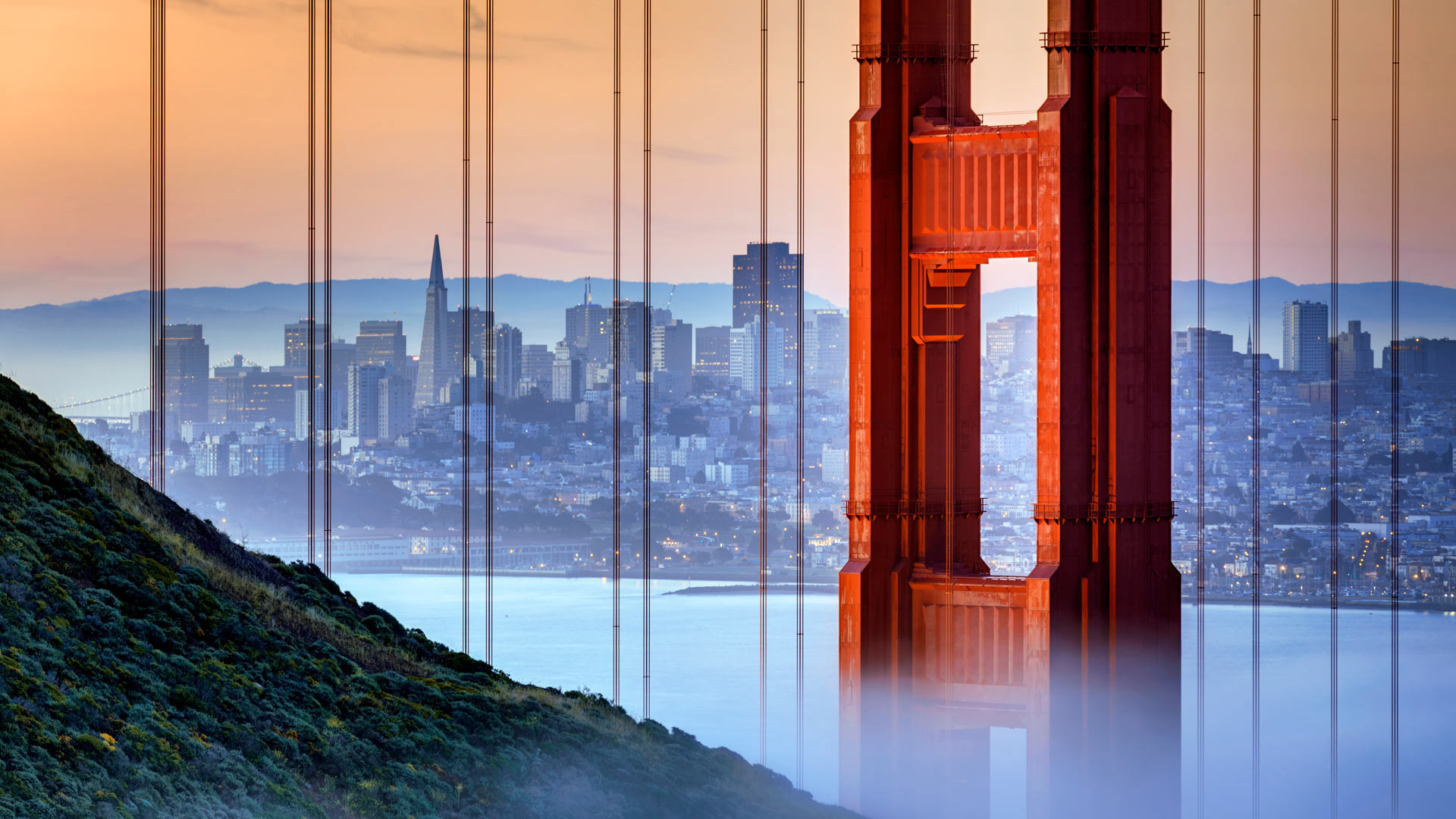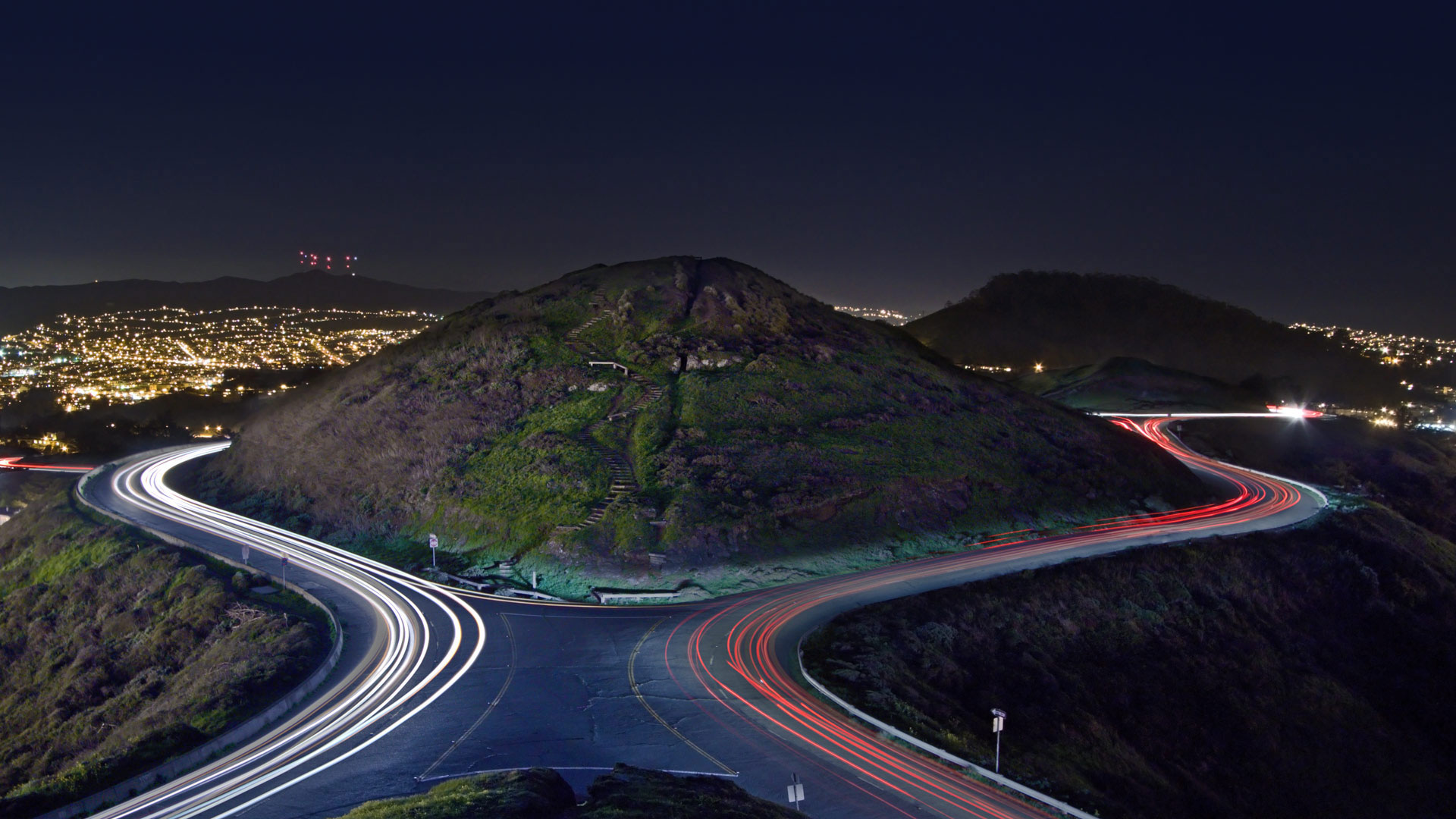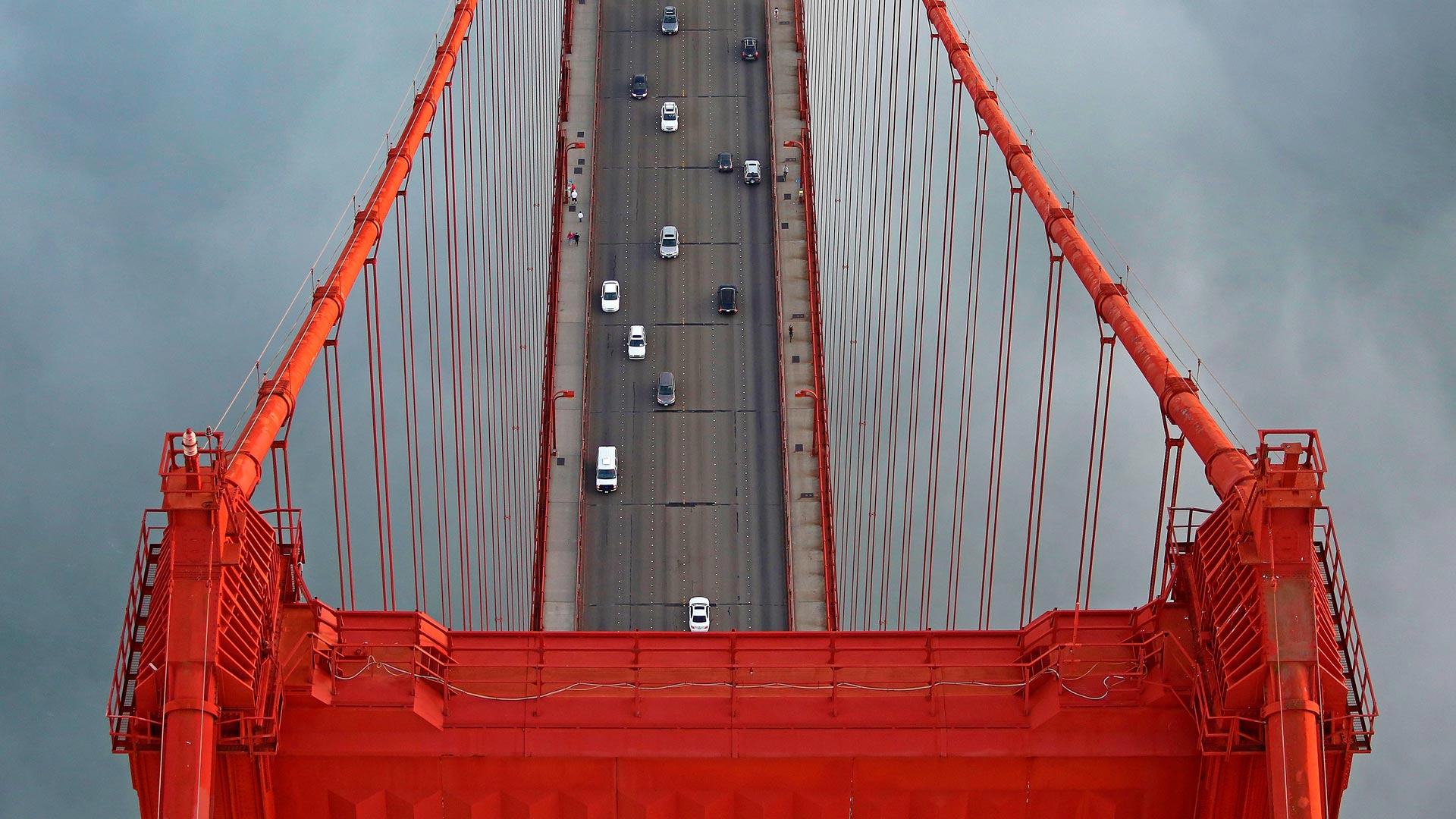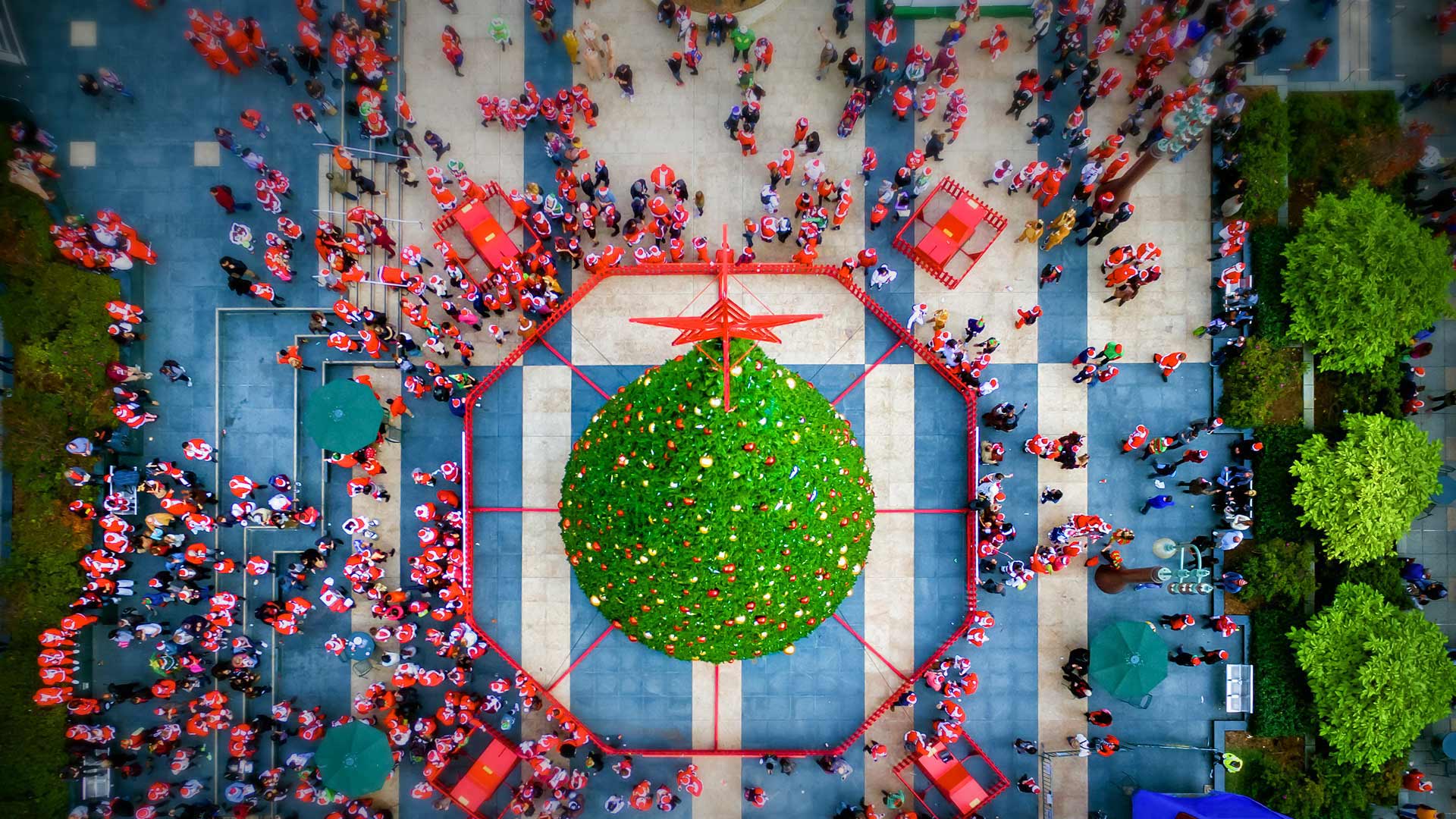金门大桥,旧金山,加利福尼亚州,美国 Golden Gate Bridge, San Francisco, California (© Jim Patterson/Tandem Stills + Motion)
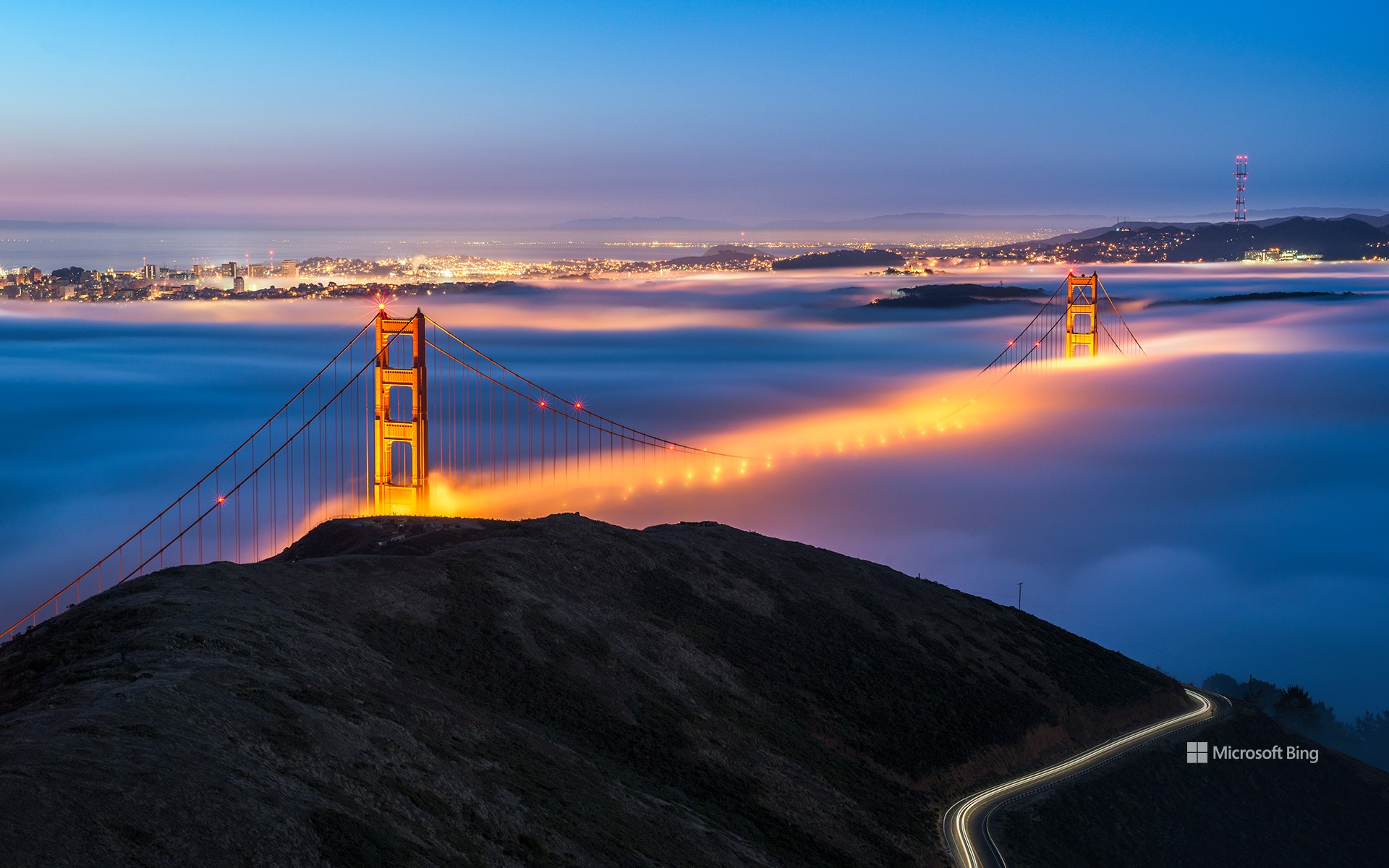
金门大桥,旧金山,加利福尼亚州,美国 Golden Gate Bridge, San Francisco, California (© Jim Patterson/Tandem Stills + Motion)
雾锁金门 On cloud forty-nine
金门大桥,旧金山,加利福尼亚
金门大桥是人类建筑的奇迹,它像哨兵一样矗立在旧金山湾区的入口处。金门大桥被金门海峡水域上方的浓雾所笼罩,桥塔高达746英尺,塔身上有着充满艺术气息的装饰元素。这座大桥是工程师约瑟夫·施特劳斯、建筑师艾尔文·莫罗和其他许多人为连接旧金山和马林县而共同协作的结果。金门大桥被漆成国际橘,而大桥名字中的“金”则指的是桥下那片反射阳光的金门海峡水域。这座桥于1937年向公众开放,但要建成这座大桥并不容易,尤其是在大萧条时期。不过因为它的建设雇用了数千人,间接促进了当地的就业和技术发展,所以付出还是得到了回报。光影变幻,时代变迁,金门大桥不仅成为了人类创新的证明,更是集功能性与美学于一体的永恒杰作。
Golden Gate Bridge, San Francisco, California
An iconic feat of engineering, the Golden Gate Bridge stands like a sentinel at the entrance to San Francisco Bay. Pictured here blanketed by fog above the waters of the Golden Gate Strait, its towers, adorned with Art Deco elements, reach a height of 746 feet. The bridge opened in 1937, thanks to the efforts of engineer Joseph Strauss, architect Irving Morrow, and others who wanted to connect San Francisco to Marin County. It wasn't an easy vision to accomplish during the Great Depression, but the investment paid off as its construction created thousands of jobs and boosted growth. It was Morrow who picked the striking color, International Orange, an unusual choice at the time when many bridges were gray or black. He felt it would contrast well with the surrounding hills, sky, ocean, and fog. The Golden Gate Bridge, a testament to human innovation, is a timeless masterpiece blending functionality with beauty.
旧金山湾的盐滩 Salt flats in San Francisco Bay (© Jeffrey Lewis/Tandem Stills + Motion)
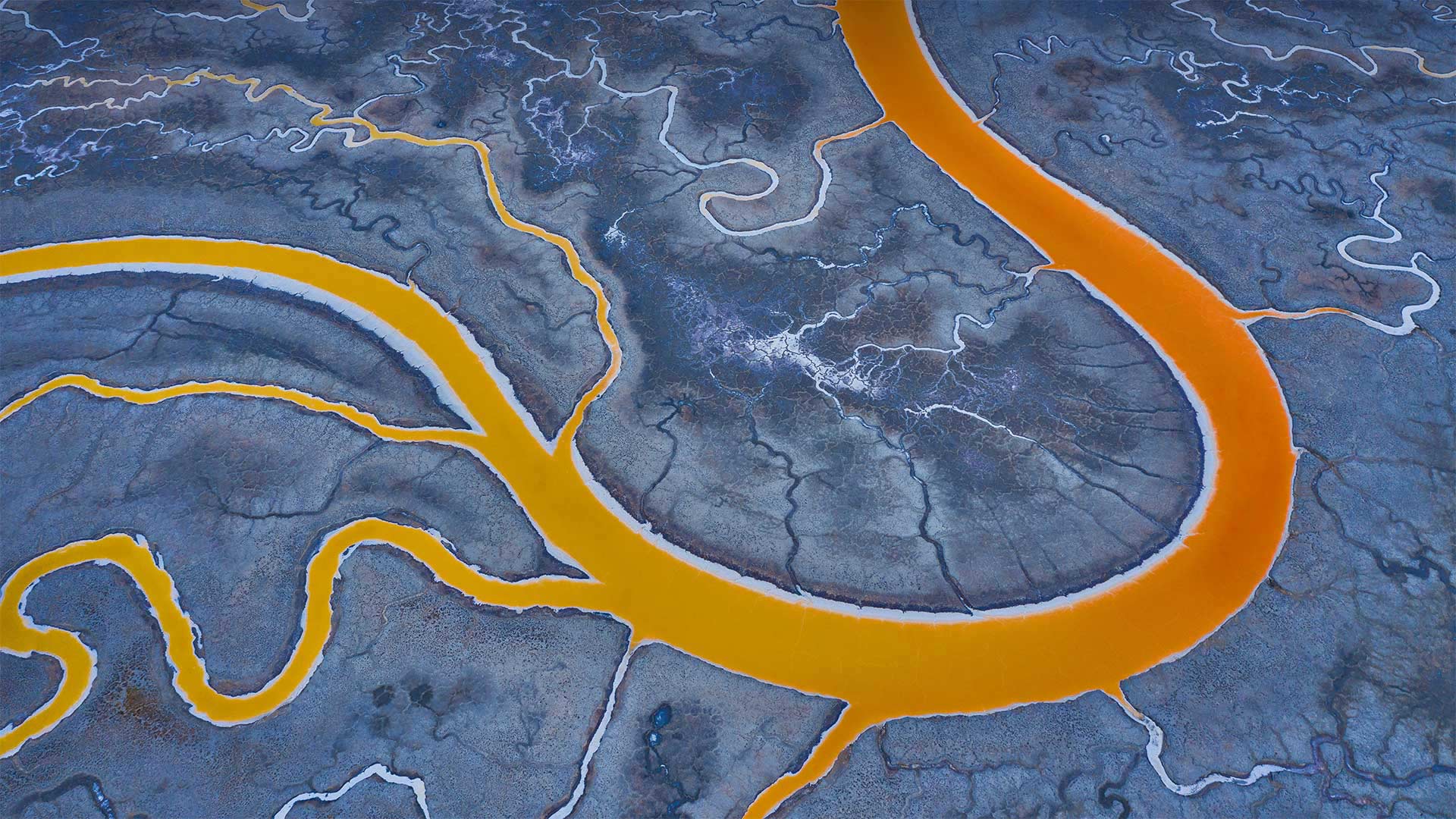
旧金山湾的盐滩 Salt flats in San Francisco Bay (© Jeffrey Lewis/Tandem Stills + Motion)
一个咸咸的地点 A salty situation
San Francisco Bay salt flat
You might be wondering where the volcano is in today's photo, but that's not lava. These are salt evaporation ponds in San Francisco Bay. If you happen to be in the air and flying over this part of the country, you'll notice not just the bright orange but various greens and blues and even magenta pools that are part of the famous salt ponds. The vibrant colors are determined by brine shrimp, algae, and other microorganisms and their responses to different levels of salt. This orange results from about a mid-level saline concentration and the presence of tiny brine shrimp in the water. Green indicates low levels of salt, while pink or red are signs of high salt content in an algae-rich pond.
When Spanish explorers and missionaries arrived in the area in the late 18th century, members of the Indigenous Ohlone people were already extracting salt from the naturally occurring ponds. The California Gold Rush (1848–1855) brought waves of settlers to the region, and salt became one of San Francisco's largest industries. Roughly 80% of the wetland was eventually lost to salt mining, landfill, or other industrial alteration. But since 2003, many of these tidal flats have been acquired by federal and state agencies as well as private foundations to be restored to their original state. The restoration process will take decades, but even as the wetlands are being restored, about half a million tons of sea salt are harvested from the ponds every year.
旧金山湾盐滩
你可能想知道今天照片中的火山在哪里,但那不是熔岩。这些是旧金山湾的盐蒸发池。如果你碰巧在空中飞过这个国家的这一地区,你不仅会注意到明亮的橙色,还会注意到各种绿色和蓝色,甚至是品红池,它们是著名盐池的一部分。鲜艳的颜色是由盐水虾、藻类和其他微生物及其对不同盐含量的反应决定的。这种橙色是由于大约中等浓度的盐水和水中存在微小的盐水虾造成的。绿色表示含盐量低,而粉色或红色表示富藻池塘的含盐量高。
18世纪末,当西班牙探险家和传教士抵达该地区时,当地的奥隆人已经在从天然池塘中提取盐。加利福尼亚淘金热(1848-1855)为该地区带来了一波又一波的定居者,盐业成为旧金山最大的产业之一。大约80%的湿地最终因盐矿开采、填埋或其他工业改造而消失。但自2003年以来,联邦和州政府机构以及私人基金会收购了许多这些潮滩,以恢复其原始状态。恢复过程将需要几十年,但即使湿地正在恢复,每年从池塘中收获约50万吨海盐。
金门公园中日本茶园里盛开的樱花,加州旧金山 Cherry blossoms in bloom at the Japanese Tea Garden in Golden Gate Park, San Francisco, California (© luisascanio/iStock/Getty Images)
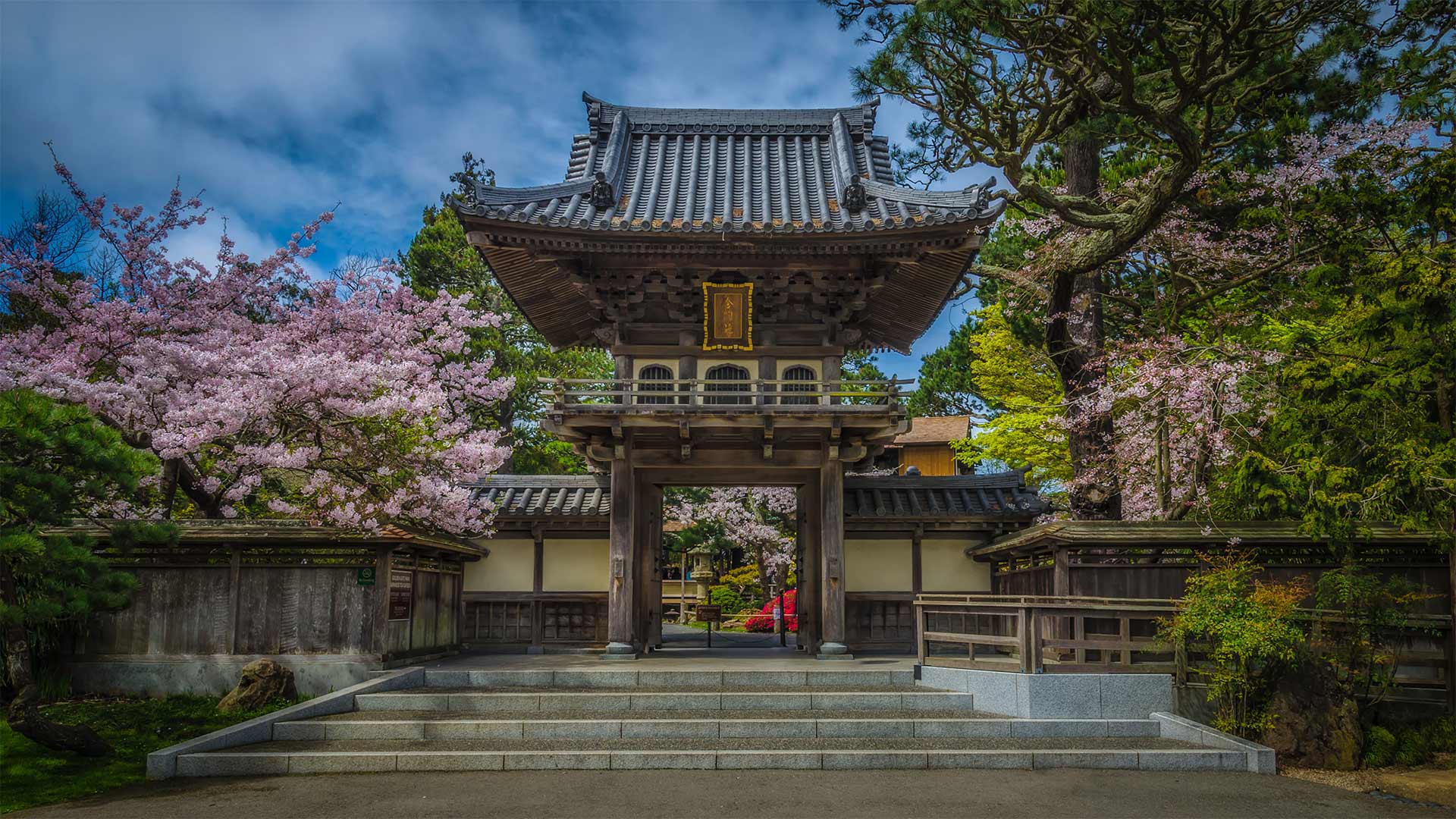
金门公园中日本茶园里盛开的樱花,加州旧金山 Cherry blossoms in bloom at the Japanese Tea Garden in Golden Gate Park, San Francisco, California (© luisascanio/iStock/Getty Images)
It's Asian American and Pacific Islander Heritage Month
With Asian American and Pacific Islander Heritage Month kicking off today, we're visiting the Japanese Tea Garden in San Francisco's Golden Gate Park. Originally designed as a temporary exhibit in the 1894 World's Fair, the gardens became a permanent fixture in the park, overseen by landscape designer Makoto Hagiwara.
Hagiwara poured his money, passion, and talents into giving visitors to the garden an authentic taste of Japanese horticulture. Visitors then and today cross bridges over koi ponds and wander through pagodas and gardens full of native Japanese plants and trees. Hagiwara died in 1925, but his family remained in the house he built on the property until they were sent to an internment camp during World War II and the gardens were renamed 'Oriental Garden.' Once the war was over, the original name returned, but the family did not. Hagiwara's vision lives on in the gardens, and as one example of the millions of Asian and Pacific Islander Americans who've helped build and beautify our nation.
今天是亚裔美国人和太平洋岛民遗产月
今天,随着亚裔美国人和太平洋岛民遗产月的开幕,我们将参观旧金山金门公园的日本茶园。最初设计为1894年世界博览会的临时展览,花园成为公园的永久固定设施,由景观设计师Makoto Hagiwara监督。
Hagiwara倾注了他的金钱、热情和才华,让游客们能真正体验到日本园艺的味道。当时和今天的游客都会跨过锦鲤池塘上的桥梁,漫步在充满日本本土植物和树木的宝塔和花园中。哈吉瓦拉于1925年去世,但他的家人仍住在他在这片土地上建造的房子里,直到他们在二战期间被送到一个拘留营,这些花园被改名为“东方花园”。战争结束后,原名又回来了,但家人没有。哈吉瓦拉的愿景永存于花园之中,是数百万亚太岛民帮助建设和美化我们国家的一个例子。
Andy Goldsworthy's 'Wood Line' installation along Lovers' Lane in the Presidio of San Francisco, California (© Chris LaBasco/Alamy)
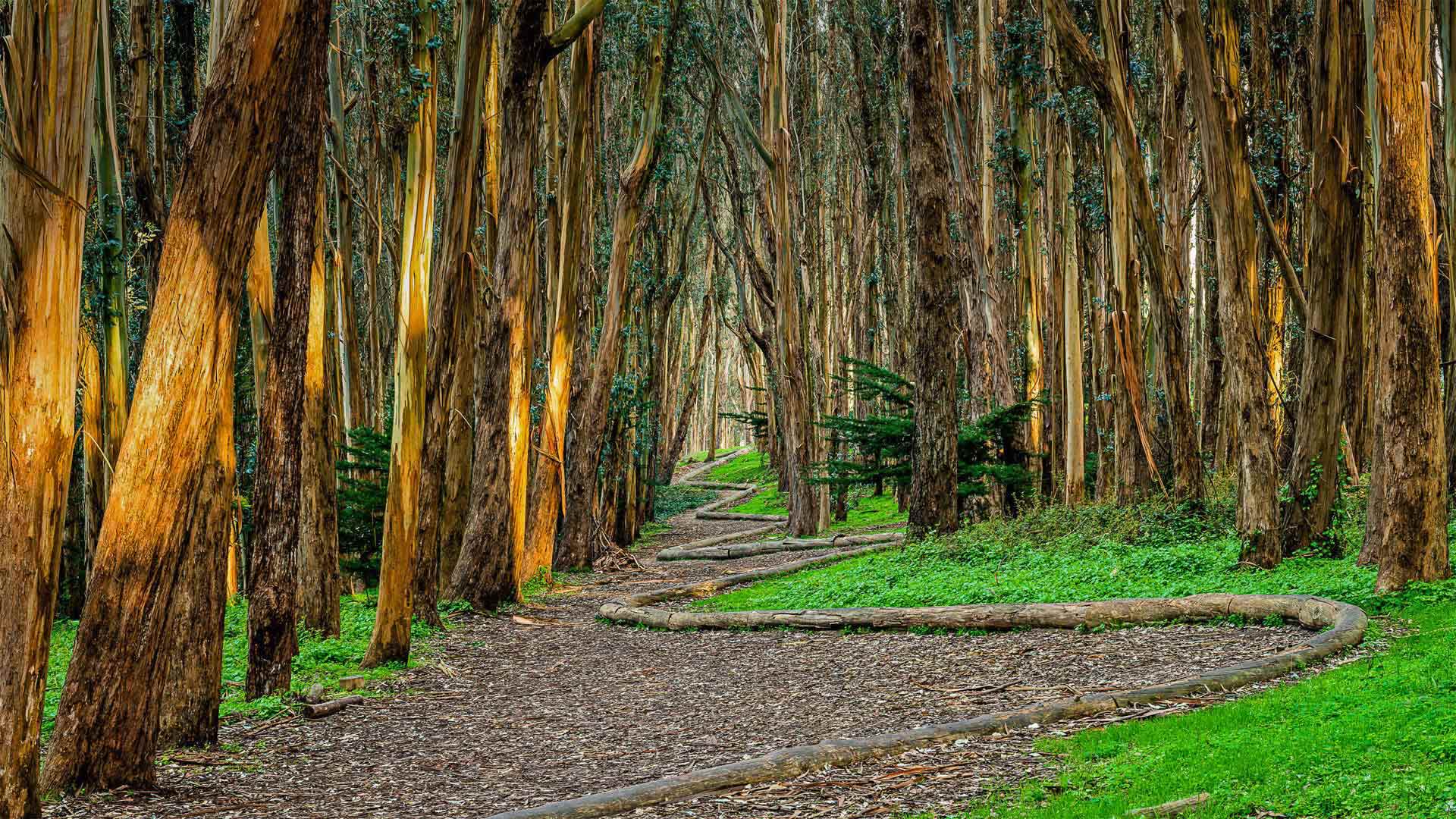
Andy Goldsworthy's 'Wood Line' installation along Lovers' Lane in the Presidio of San Francisco, California (© Chris LaBasco/Alamy)
Take a hike near Lovers' Lane
For those of you who love getting outside, you're in luck! Today is Take a Hike Day, an activity the American Hiking Society says will make you happier as you enjoy the great outdoors. And what better way to take a hike than a walk down Lovers' Lane in San Francisco's Presidio? The sinewy trail we see in today's photo is called 'Wood Line' and was designed by the environmental artist Andy Goldsworthy. By using felled eucalyptus trees, Goldsworthy intended this land art to eventually biodegrade and fade back into the forest floor. It's one of four of his works within this national park that once served as a US military outpost.
No matter where you are, we hope you'll find the closest trail to explore. The US National Trail System maintains more than 55,000 miles of National Scenic, Historic, or Recreational trails through some of the most beautiful, interesting parts of the country, so you have plenty of hikes to choose from.
穆尔森林国家纪念碑,加利福尼亚州旧金山 Muir Woods National Monument, San Francisco, California (© Mia2you/Shutterstock)
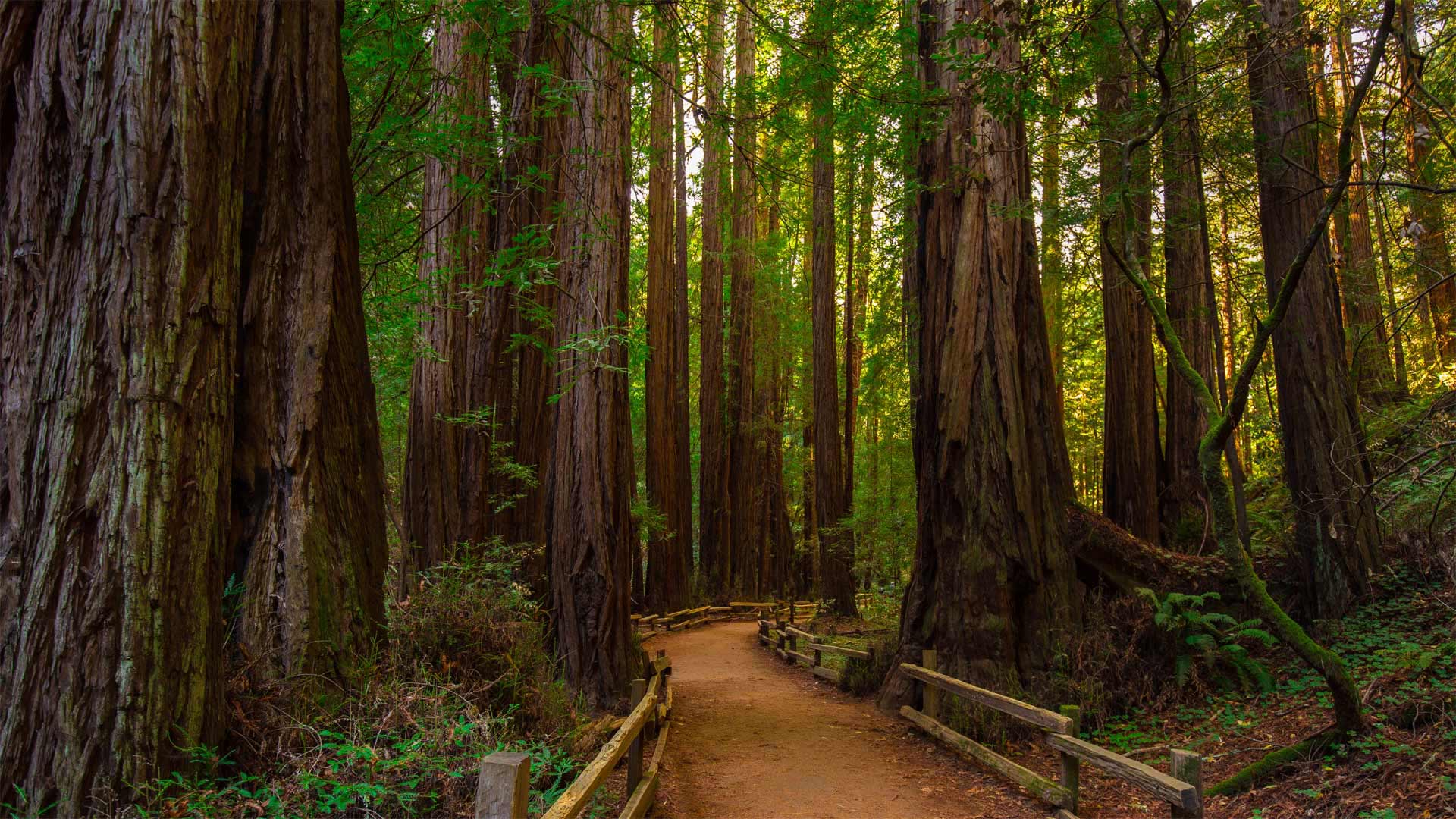
穆尔森林国家纪念碑,加利福尼亚州旧金山 Muir Woods National Monument, San Francisco, California (© Mia2you/Shutterstock)
Into the woods
On this day in 1908, President Theodore Roosevelt declared 554 acres in Marin County, California, a national monument. William and Elizabeth Kent, who donated the land, insisted the monument be named after naturalist John Muir, the environmentalist known as the 'father of the national parks.' Part of the Golden Gate National Recreation Area, Muir Woods is best known for its old-growth coastal redwood forests, which make up more than half its land. The redwoods in the monument are 600-800 years old, on average, with the oldest being at least 1,200. The tallest tree is about 258 feet, though further north redwoods grow as high as 379 feet. Redwoods are an important part of the forest ecosystem. They absorb and 'strip' moisture from fog, which then drips into the ground, supporting the trees as well as other forest life.

